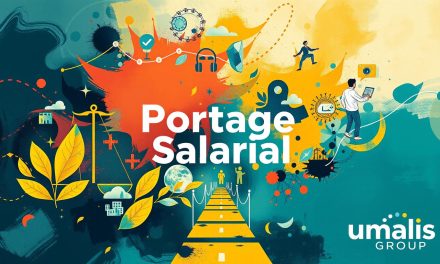The freelance economy is a fast-growing part of modern work where independent professionals and the broader workforce power businesses with flexible, on-demand skills.
The market now reaches massive scale — roughly $5.4 trillion in annual revenue — which shows why this trend matters for anyone seeking new opportunities. In the U.S., millions choose independent work and many plan to stay this way.
Today, flexibility and autonomy attract talent, while clients get faster access to specialized skills. Remote working and hybrid models remove borders, letting a freelancer in France compete globally.
To succeed you need the right mix of skills, tools, client communication, and simple workflows. This report offers practical insights on platforms, services, earnings, and local dynamics so you can plan with confidence.
Table of Contents
Key Takeaways
- The market is large and growing, creating real opportunities for independent workers.
- Flexibility and remote working benefit both freelancers and businesses.
- Success depends on clear skills, good tools, and strong client processes.
- Regional rules matter — we highlight France and European trends.
- This guide walks from market size to platform strategy and sustainable work.
Executive snapshot of the freelance economy today
Global revenues tied to on-demand work hit a multi‑trillion dollar mark. Recent research places the gig market at $5.4 trillion, a quick proxy for how central independent work is to businesses and jobs worldwide.
Key stats at a glance
Online participation is growing: about 12% of the global workforce now does paid project work via digital channels.
- In the U.S., 72.1M people do independent work (roughly 45% of the workforce); 26M of them are full‑time.
- By 2027, the projected number freelancers in the U.S. could reach 86.5M (about 50.9% of the workforce).
- Sentiment is upbeat: 9 in 10 say better days are ahead and 67% report short‑term optimism (Upwork).
Companies and businesses are shifting hiring patterns. More teams mix contractors into core workflows, changing platform use and vendor choices.
What’s next: the following sections break this snapshot into market size, participation trends, corporate demand, platform dynamics, and practical takeaways for readers in France and beyond.
Market size and momentum: a $5.4T global gig market
SIA’s $5.4 trillion number points to a deep pool of paid project work and rising demand from companies of every size.
What that figure signals for independent workers and buyers
The scale shows breadth: more clients, varied projects, and longer buying cycles. Research also finds U.S. independent talent contributed roughly $1.3T in earnings, underlining real earning paths.
For freelancers, this means wider opportunity but also more competition. For firms, it means modular hiring and tighter brief‑to‑delivery expectations.
Practical momentum to guide 2025 planning
- Time outreach to budget rhythms — quarter starts and post‑planning windows work best.
- Segment prospects by company size and repeatable need to build a steady pipeline.
- Turn common briefs into template proposals and milestone plans to win more projects quickly.
Use these signals to prioritize services where the market spends now. Strong proposals and clear milestones win work and create repeat clients for freelancers.
Participation trends: who is freelancing and why
More people now choose independent project work for reasons that go beyond pay.

Share of the workforce: about 12% of the global labor force does paid online project work. In the U.S., the number freelancers is roughly 72.1M — about 45% of the workforce — and 26M of them work full time (MBO 2023).
Who is participating
Participation spans ages and backgrounds. Young adults and mid‑career people show notable growth, while more women join in many sectors. Recent movers include employees shifting careers, parents seeking flexibility, and professionals relocating for lifestyle reasons.
Why they choose it
- Flexibility and autonomy: 62% cite flexible schedules and 56% cite freedom of choice (FlexJobs).
- Health and security: 78% feel healthier working independently; 66% of full‑time independents feel more secure than traditional employees (MBO).
- Control over hours and income: Workers can manage pay arrangements, diversify income streams, and set hours that fit life.
For readers in France: start by naming your core motivation. That clarity helps match demand, set rates, and design a sustainable work rhythm.
Corporate demand signals: how businesses are adopting external workers
Companies are shifting from short tests to making external contributors a steady part of delivery. Recent research shows about 33% of work now happens via outside contributors (MIT Sloan & Deloitte, 2023).
From pilots to core strategy
What starts as a pilot often becomes embedded. Onboarding speeds up, scopes get clearer, and management practices tighten. That means more predictable briefs and faster approvals for freelancers.
Leadership priorities and workforce shifts
About 86% of leaders say effective management of external contributors is critical, and 90% now prioritize independent workers (MIT Sloan; Harvard Business Review).
In Q4 2022, 40% of companies hired contractors in place of layoffs, and 53% converted employees to contract roles. These shifts create near‑term openings but change pay and engagement norms.
Signals to watch and how to respond
- Track budget cycles, platform adoption, and procurement updates to time outreach.
- Align proposals to management needs: outcome pricing, milestones, and governance clarity.
- In France and the EU, be ready with full documentation, references, and compliant contracts.
For a practical playbook on positioning with U.S. and global clients, see our strategic market guide.
NASA case study: speed, savings, and skills performance
NASA’s pilot with on‑demand talent shows how fast high‑skill sourcing can shorten timelines and cut costs.
Results: NASA reported that external experts’ skills met or exceeded expectations in 92% of projects. The agency also recorded up to 80% cost savings and slashed procurement from 9–12 months to about 3–4 weeks for certain assignments.
What this implies for a company: quality rises when selection, clear briefs, and frequent check‑ins drive outcome‑focused management. Shorter cycles mean value arrives faster and teams iterate sooner.
Practical takeaways:
- Use concise scopes and milestones to keep project delivery predictable.
- Adopt templates, trackers, and standard tools to ensure consistent work quality.
- Be proposal‑ready to win when procurement windows compress.
| Metric | NASA Result | Implication for independents |
|---|---|---|
| Success rate | 92% met/exceeded | Prioritize clear communication and proof of skills |
| Cost savings | Up to 80% | Highlight efficiency and total cost of delivery |
| Procurement time | 3–4 weeks vs 9–12 months | Be responsive and ready to start quickly |
For freelancer audiences in France, add compliance documents, case narratives, and verified portfolios to match EU procurement expectations.
Freelance platforms: scale, growth, and strategic role
Digital talent hubs now act as the primary gateway between skilled pros and paying projects. The global market for these services was $4.39B in 2022 and analysts expect a ~16.5% CAGR to 2030, with platforms perhaps reaching about $14.39B.

Users average 3.2 platforms, yet 69% remain loyal to one or two. That mix explains why many freelancers bid widely but concentrate their best work and reviews on a primary account.
How platforms add value:
- They scale demand and connect freelancers and clients for discovery, vetting, and payments.
- Some communities focus on creative design, while broader marketplaces add built‑in project management and tracking tools.
- Advances in matching, messaging, and contracting technology raise conversion rates for businesses and talent.
For readers in France: balance global and EU‑focused freelance platforms to meet local compliance and data rules. Choose a primary platform for high‑quality leads and a secondary one for niche work. Prioritize client quality, fees, search visibility, and project fit when you decide where to invest time.
What’s hot by service category
Buyers are backing a few high‑value service categories that shape where money flows. This section highlights what leads revenue and where growth is fastest so you can pick services that match demand.
Project management leads revenue
Project management held about 24.3% of global revenue in 2022, driven by firms buying predictable delivery and governance.
For freelancers, package clear deliverables, milestone plans, and outcome pricing to win more projects. Offer starter scopes that scale into monthly retainers to lift earnings.
Web and graphics design are fast growers
Design is expanding rapidly, with web and graphics at a ~19.2% CAGR. Clients want fresh digital experiences tied to marketing outcomes.
Target briefs that combine UX, conversion copy, and brand assets so you move from single gigs to repeat work across campaigns.
Integrated services show the highest CAGR
The broader services segment — managed and tech-enabled collaboration support — posts the strongest growth (~18.1% CAGR).
These offerings raise average order size because they bundle tools, onboarding, and ongoing support. Use a compact tool stack (prototyping, task boards, QA, analytics) so clients trust delivery and spend more money.
- Map tiers: scoping → fixed deliverable → monthly management retainer.
- Cross-skill tip: add marketing analytics to design work to capture multi-project pipelines.
- See practical guides on freelance management to position offers for French clients.
Regional dynamics: where demand and earnings are moving
Regional shifts are reshaping where clients buy skills and how pay levels move. North America led with a 31.6% revenue share in 2022, reflecting mature demand and higher average rates.
North America vs Asia Pacific
North America offers steady opportunities and often higher earnings per project. When U.S. and Canadian companies hire, price expectations rise and timelines shorten.
Asia Pacific is accelerating fast, with ~18.7% CAGR. That growth opens volume opportunities for those who can scale delivery and adapt pricing to growing markets.
MENA momentum and part‑time intent
In MENA, about 70% of employers plan to hire independent talent while 78% of people intend to work part time. That mix creates cross‑border demand for short, repeatable gigs.
- For France-based professionals: decide when to localize services for EU clients versus bidding abroad to diversify income.
- Prioritize outreach where the number of hiring companies and pay levels match your target rate.
- Work that travels well: design, SaaS implementation, copy, and project management across time zones.
Practical way forward: price for the market you target, clarify communication cadence, and add contract terms that match client expectations on data protection and deliverables.
Remote and hybrid work reshaping freelance opportunities
Workplace norms now favor hybrid models, creating new paths for distributed talent to join strategic projects.

Employee preferences point to lasting change: about 90% want ongoing flexibility in when and where they work, and 68% would choose remote options. Many would even accept lower pay to stay remote, so firms must adapt benefits and hiring to retain people.
Hiring realities: high‑paying remote roles are rising
Roughly 15% of top paying job listings are remote. That creates steady remote-first jobs that freelancers can tap without relocating. Venture-backed and enterprise businesses lean hybrid: ~60% of VCs plan to keep hybrid models, while only 6% mandate full-time office time.
How to position and win remote work
- Offer clear overlap hours and documented handoffs to ease cross-time-zone work.
- Show examples of independent delivery and quick start capability to complement in-house teams.
- Win roles with strong asynchronous communication, crisp documentation, and proven discipline.
| Hiring norm | What it means | How a freelancer should respond |
|---|---|---|
| Remote-first jobs (15% high pay) | High-quality roles open to distributed talent | Price for remote earnings and show impact |
| VC & enterprise hybrid (~60%) | Flexible on-site cadence, strategic project use | Offer short-term engagements and onboarding docs |
| Employee flexibility demand (90%) | Businesses must offer remote options or risk turnover | Position as a partner who fills gaps and reduces risk |
For France-based professionals, ensure GDPR-aligned contracts and clear data-handling notes to match enterprise requirements. This makes you a trusted external resource and improves chances to win repeat work.
Earnings, income stability, and financial outlook
A strong upside of independent work is the chance to boost your income by targeting high‑value projects and clear outcomes.
Higher earning potential:
Higher earning potential: many earn more than prior jobs
About 44% of freelancers report earning more than in traditional roles (Business News Daily). That lift often comes from selling specialized services and proving impact fast.
Contribution and the skilled services mix
Freelancers added roughly $1.3T to the U.S. market and about 53% deliver skilled services like programming, marketing, IT, and consulting (Upwork).
This shows why specialization pays: clients pay premiums for measurable results and repeatable expertise.
Financial concerns and risk management
Not everyone has a smooth ride: 30% struggle and 34% worry about financial performance (Global Survey on Freelancing).
- Mitigate variable money flow with a 3–6 month cushion.
- Use time‑based billing and average invoice cycles to plan cash needs and manage time risk.
- Negotiate milestone payments, deposits, and clear pay terms to cut late invoices.
| Focus | Why it matters | Practical step |
|---|---|---|
| Income uplift | Specialized services earn more | Package outcomes and case studies |
| Stability | Variable pay is common | Mix retainers and short projects |
| Client payments | Late invoices reduce cash | Apply deposits and milestone billing |
Track the important number: average invoice cycle. That metric helps freelancers forecast, protect growth, and win sustainable jobs without sacrificing upside.
Skill trends and upskilling advantage
Independent professionals refresh core capabilities far faster than many traditional teams. Deloitte finds 60% of these workers updated skills in the last six months versus 49% of employees over 12 months.
Faster skill refresh rates
This speed is a clear competitive advantage. Quick learning lets freelancers start client engagements sooner and hit outcomes faster.
Prioritize learning that ties to measurable results: a client-facing capability, a delivery efficiency change, and a data skill.
AI, automation, and staying competitive
Map the modern stack: AI models, automation flows, and collaboration tools. Use them to remove routine tasks and deliver higher-value solutions.
- 90-day plan: week 1–4 learn a client skill; week 5–8 adopt one efficiency tool; week 9–12 practice a data technique.
- Translate gains into pricing: sell faster delivery as a premium, and package new scope into clear milestones.
- For France, track EU technology standards and seek relevant certifications to win public and enterprise work.
| Focus | Action | Benefit |
|---|---|---|
| Client skill | Choose one high-impact skill | Faster project wins |
| Delivery tool | Adopt one automation or collaboration tool | Higher throughput |
| Data skill | Learn basic analytics or dashboards | Clearer outcomes for clients |
Practice with small pilots so new capabilities stick. Small projects help freelancers prove value, set higher prices, and win repeat work.
The freelance economy in France and Europe: opportunities and gaps
In France and across Europe, the market combines strong worker protections with clear chances to sell services abroad under remote working norms. This mix gives freelancers security but adds compliance steps when signing clients outside the EU.

Adoption patterns: many companies rely on a single trusted platform or vetted networks to hire external talent. Procurement and data rules push firms to prefer verified profiles and crisp contracts.
Regulatory context: EU and French laws tighten classification, VAT handling, and social charges. That shapes how people price services and report income.
| Regulation | Impact | Action |
|---|---|---|
| Data & GDPR | Stricter client checks | Use compliant templates |
| Worker classification | Fewer informal contracts | Keep clear scopes and records |
| Tax & social charges | Different net pay | Budget for charges and pensions |
“Keep documentation airtight and localize your profile to win cross-border work.”
Quick checklist for France
- Localize platform profiles and descriptions.
- Adopt EU contract templates and GDPR notes.
- Prepare onboarding docs that show compliance and references.
Platform strategy: choosing, stacking, and managing clients
Picking the right platforms shapes how quickly you land steady, high-value clients. Use a simple stack: one primary platform for deep visibility and a small secondary set for discovery. On average, professionals use 3.2 platforms, while 34% rely on them as their main source of work and 69% stay loyal to one or two.
When to specialize or diversify
Choose specialization when a platform fits your niche—strong design demand or premium search rank makes focus pay off.
Diversify when you need to reduce reliance risk. A compact secondary stack lets you test markets without losing review momentum on your primary account.
Client acquisition playbook: proposals, positioning, reviews
Lead with outcomes. Write tight proposals that show results, milestones, and timelines. Ask every satisfied client for a review and two short references.
- Position: one-line value statement focused on outcomes for the client.
- Proposal: clear milestones, deliverables, and deposit terms.
- Follow-up: schedule a two-step reminder system to protect conversion rates.
Tools and management tips: track proposals, follow-ups, and hours with a simple spreadsheet or a lightweight project app. Tag leads by platform to see which channels bring repeat projects.
Repurpose marketing assets—case studies, visuals, and portfolios—so they match each marketplace’s norms. Over time, convert platform wins into direct freelance work with client consent, clear agreements, and respect for platform terms.
Operations and project management for independent workers
Clear workflows and simple tech reduce errors and speed up every engagement. A lean ops setup turns ad hoc jobs into repeatable, high-quality delivery.
Tooling: project management, communication, and invoicing
Pick one project management system, one communication hub, and an invoicing app that automates reminders and handles EU tax fields.
Platform ecosystems and FMS-style tools improve collaboration and cut cycle time, lowering error risk for both clients and freelancers.
Time, scope, and project management best practices
Use scope templates and change-order rules to protect hours budgets and keep projects on schedule.
Adopt simple deposit and milestone terms so you get paid and start fast.
Data, analytics, and repeatable processes that scale
Build dashboards for pipeline, utilization, and margin. Use technology to standardize discovery, proposals, and kickoff.
Work a steady rhythm: weekly status, milestone demos, and post-project reviews to capture lessons and improve.
| Tool | Benefit | France tip |
|---|---|---|
| PM system | Clear tasks and delivery dates | Include GDPR notes in onboarding |
| Communication hub | Faster approvals and fewer emails | Record consent for data sharing |
| Invoicing app | Auto reminders and VAT support | Use compliant invoice templates |
Standardize small processes to win bigger clients and reduce rework.
For a practical checklist to streamline operations, see how to optimize your management strategies.
Risks, regulations, and the future of independent work
Regulators and firms increasingly question where clear lines should exist between employees and independent talent. This debate shapes rules on classification, benefits, and fair pay.
Classification clarity, benefits access, and fair-pay safeguards
Key risks include misclassification, uneven pay practices, and limited benefits for many workers. In France and the EU, rules aim to tighten tests that separate employees from independent contractors.
How to protect income: use standardized contracts, require deposits, set milestone billing, and agree acceptance criteria with clients before work begins. These steps reduce late payments and disputes for freelancers.
Cross‑border work: payments, contracts, and compliance
Cross-border demand brings KYC checks, VAT questions, and tax forms similar to W‑8BEN. Currency tools and clear invoicing speed payments from companies and platforms.
| Risk | Action | Benefit |
|---|---|---|
| Misclassification | Keep written scopes and hours limits | Stronger legal position |
| Late pay | Deposit + milestone billing | Protected income |
| Cross-border tax | Confirm VAT/KYC and use currency tools | Smoother payments |
Tech helps: adopt e-signature, identity verification, invoicing, and simple bookkeeping tools. These reduce friction and build trust with clients and companies.
“Plan compliance before you sign—clear contracts cut disputes and speed payment.”
Pre-engagement checklist for France-based freelancers: confirm VAT status, collect KYC info, agree deposit terms, and include GDPR clauses in contracts. Doing this protects both reputation and income as the workforce evolves.
Conclusion
The global shift to modular work shows that the freelance economy is no longer a stopgap but a strategic resource.
Demand, platforms, and solid operations now converge to make income more predictable and to create lasting opportunities for freelancers.
For readers in France and Europe, use local strengths — quality, compliance, and languages — while bidding abroad for higher‑value money projects.
Businesses add independents to core teams, so demonstrating outcomes and reliability is the fastest way to land a new job.
A simple plan: pick a focus, refine your offer, standardize delivery, measure results, and iterate. This is the practical way forward for any freelancer who wants steady opportunities and better income.
FAQ
What does the .4T market number mean for independent workers and businesses?
The .4 trillion figure shows the global scale of contract and project-based work. It signals growing demand from companies for flexible talent and expanding opportunities for workers with in-demand skills like design, project management, marketing, and software development. For businesses, it means rethinking workforce strategy to include external contributors as core capacity, not just stopgap help.
Who is participating in this type of work and why are they choosing it?
Participation spans a wide range: full-time professionals, part-timers, retirees, and students. Common motivations include flexibility, autonomy, better work-life balance, and higher earning potential. Many people also choose this path to control their schedules, diversify income, or pursue specialized services on their own terms.
How common is online participation among workers?
About 12% of the global workforce engages in online contract work, with rates as high as 45% in the U.S. This reflects both platform adoption and remote hiring practices, which let companies tap talent anywhere and let workers sell skills across borders.
Which service categories are growing fastest right now?
Project management, web and graphic design, integrated collaboration, and support services are among the fastest growers. Demand is rising where companies need scalable, skilled contributors to launch products, run campaigns, and maintain digital operations.
How are platforms changing the way people find and manage work?
Platforms provide searchability, reputation systems, payment flows, and tools for proposals and contracts. Many users rely on multiple platforms—about three on average—to diversify leads and stabilize income. Platforms also influence client expectations around speed, deliverables, and pricing.
What are typical earnings and financial concerns for independent workers?
Many professionals report higher pay than in prior roles, especially in tech and specialized services, but income can vary month to month. Key financial issues include payment terms, late invoices, taxes, and the need to budget for benefits and downtime. Smart pricing and reserve funds help manage variability.
How should someone choose between specializing or diversifying across platforms and clients?
Specialization helps command higher rates and build brand authority in niches like UX design or cloud engineering. Diversifying platforms and clients reduces risk and evens out demand. A balanced approach—deep skill focus plus multiple client channels—works well for most independent workers.
What tools help run projects and keep operations smooth?
Project management tools (Asana, Trello), communication platforms (Slack, Zoom), invoicing and payments (QuickBooks, Stripe), and portfolio sites all play a role. The right stack depends on service type, but consistent processes for scope, time tracking, and client updates cut scope creep and improve delivery.
How are companies integrating external workers into core workflows?
Many firms are moving from pilot programs to strategic adoption, using contractors for up to a third of work in some teams. They embed contractors in sprints, include them in planning, and standardize onboarding and procurement to speed up hiring and improve outcomes.
Are there geographic differences in demand and pay?
Yes. North America typically leads in demand and rates, while Asia Pacific shows fast growth in supply and platform adoption. Regions like MENA are seeing rising employer intent and part-time engagement. Cross-border work remains common but requires careful rate-setting and payment planning.
How does remote and hybrid hiring affect opportunities?
Remote and hybrid norms expand the talent pool and create more high-paying roles that don’t require relocation. Workers gain access to broader markets, while companies can fill skill gaps faster. This trend favors those who can manage distributed communication and deliver results asynchronously.
What are the main risks and compliance issues to watch?
Key risks include worker classification disputes, cross-border tax and payment rules, data protection, and inconsistent benefit coverage. Clear contracts, proper invoicing, and using compliant payment platforms reduce legal and financial exposure for both parties.
How does upskilling affect long-term competitiveness?
Faster skill refresh rates and learning new tools—especially around AI and automation—keep workers marketable. Investing in certifications, portfolios, and client case studies helps professionals win higher-value projects and sustain earnings growth.
What should independent workers do to improve client acquisition?
Build a concise value proposition, craft tailored proposals, gather client reviews, and showcase case studies. Active networking, targeted pitches on platforms, and consistent follow-up increase conversion. Good pricing strategy and clear deliverables make it easier to win repeat business.
How do companies measure success when using external contributors?
Organizations look at delivery speed, cost savings, quality of work, and scalability. Metrics often include project completion rates, time-to-hire, ROI per engagement, and client satisfaction. Clear KPIs and feedback loops with contractors drive continuous improvement.





